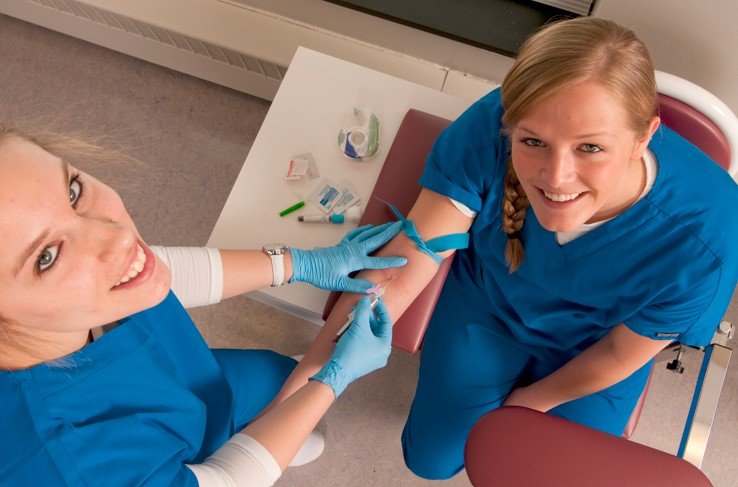Key Steps and Regulations for Implementing a Medical Device Calibration Program in a Hospital Setting in the United States
Summary
- Understanding the importance of medical device calibration in a hospital setting.
- Key steps to consider when implementing a medical device calibration program.
- Regulations and guidelines to follow for compliance in the United States.
Introduction
Medical device calibration is a critical aspect of hospital supply and equipment management in the United States. Ensuring the accuracy and reliability of medical devices is essential for providing quality patient care and maintaining regulatory compliance. Implementing a comprehensive calibration program requires careful planning and adherence to Regulations and guidelines set forth by governing bodies. In this article, we will explore the key steps and Regulations to consider when implementing a medical device calibration program in a hospital setting in the United States.
Key Steps to Consider
1. Assessing Calibration Needs
Before implementing a medical device calibration program, hospitals must first assess their calibration needs. This involves identifying all medical devices that require calibration, determining the frequency of calibration required for each device, and establishing a system for tracking and managing calibration schedules.
2. Establishing Calibration Protocols
Once the calibration needs have been identified, hospitals should establish clear protocols for conducting calibrations. This includes defining the procedures for calibrating each type of device, setting calibration tolerance limits, and documenting calibration results. Standardizing calibration protocols across all departments ensures consistency and compliance.
3. Training Staff
Proper training is essential for the successful implementation of a medical device calibration program. Hospitals should provide comprehensive training to staff members responsible for conducting calibrations, including instruction on calibration procedures, equipment usage, and documentation requirements. Ongoing training and competency assessments should be conducted to ensure staff proficiency.
4. Implementing Documentation Systems
Accurate record-keeping is crucial for demonstrating compliance with regulatory requirements and maintaining a complete calibration history for each medical device. Hospitals should implement robust documentation systems for recording calibration dates, results, calibration certificates, and any deviations or corrective actions taken. Electronic documentation systems can help streamline this process and facilitate compliance.
5. Monitoring and Maintenance
Monitoring the performance of calibrated medical devices is essential for ensuring ongoing accuracy and reliability. Hospitals should establish a system for conducting regular maintenance checks, performance verification tests, and audits of calibration records. Any deviations or out-of-tolerance results should be promptly addressed to maintain the integrity of the calibration program.
Regulations and Guidelines
1. FDA Regulations
The Food and Drug Administration (FDA) regulates medical devices in the United States and sets requirements for device performance and calibration. Hospitals must ensure that calibrated medical devices meet the FDA's standards for accuracy, reliability, and safety. Compliance with FDA Regulations is essential for patient safety and regulatory approval.
2. The Joint Commission Standards
The Joint Commission, an independent organization that accredits healthcare facilities in the United States, has established standards for medical device management, including calibration requirements. Hospitals seeking accreditation must adhere to The Joint Commission's standards for medical device calibration and demonstrate compliance through audits and inspections.
3. ISO Standards
The International Organization for Standardization (ISO) has developed standards for quality management systems, including those related to medical device calibration. Hospitals can reference ISO standards, such as ISO 13485, for guidance on establishing and maintaining a quality management system for medical device calibration. Compliance with ISO standards demonstrates a commitment to quality and regulatory compliance.
Conclusion
Implementing a medical device calibration program in a hospital setting in the United States requires careful planning, adherence to Regulations, and a commitment to quality and patient safety. By following the key steps outlined in this article and complying with regulatory requirements from entities such as the FDA, The Joint Commission, and ISO, hospitals can ensure that their medical devices are accurately calibrated, reliable, and compliant with regulatory standards. A robust calibration program not only enhances patient care but also protects hospitals from regulatory scrutiny and liability.

Disclaimer: The content provided on this blog is for informational purposes only, reflecting the personal opinions and insights of the author(s) on the topics. The information provided should not be used for diagnosing or treating a health problem or disease, and those seeking personal medical advice should consult with a licensed physician. Always seek the advice of your doctor or other qualified health provider regarding a medical condition. Never disregard professional medical advice or delay in seeking it because of something you have read on this website. If you think you may have a medical emergency, call 911 or go to the nearest emergency room immediately. No physician-patient relationship is created by this web site or its use. No contributors to this web site make any representations, express or implied, with respect to the information provided herein or to its use. While we strive to share accurate and up-to-date information, we cannot guarantee the completeness, reliability, or accuracy of the content. The blog may also include links to external websites and resources for the convenience of our readers. Please note that linking to other sites does not imply endorsement of their content, practices, or services by us. Readers should use their discretion and judgment while exploring any external links and resources mentioned on this blog.
